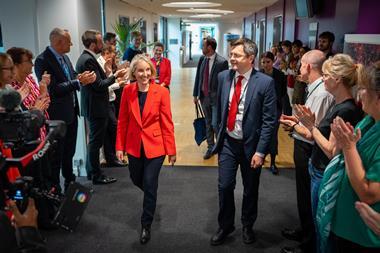
The UK has lost a total of 6,000 retail outlets in the past five years, according to research from the British Retail Consortium (BRC).
The BRC said the impact of the Covid lockdowns combined with high business rates had played a role in the closures, and called on the government to reform the “broken” rates system.
It comes as the store vacancy rate continued to climb this year, with rising rents and increased competition putting pressure on small and independent businesses.
The latest figures showed that the overall vacancy rate increased to 13.9% in Q2 of 2023, 0.1 percentage points worse than Q1 but 0.1% better than the same period last year.
Shopping centre vacancies remained stable at 17.8%, the same level as in Q1, with high street vacancies increasing to 13.9% over the same period, 0.1% worse than the first quarter.
Meanwhile retail parks remained the location with the lowest vacancy levels, seeing a fall to 8.1% in Q2, a 0.6 percentage point improvement from Q1.
“The past five years saw Britain lose 6,000 retail outlets, with crippling business rates and the impact of the Covid lockdowns a key part of decisions to close stores and think twice about new openings,” said BRC CEO Helen Dickinson.
“To inject more vibrancy into high streets and town centres, and prevent further store closures, government should review the broken business rates system.
“Currently, there’s an additional £400m going on retailers’ bills next April, which will put a brake on the vital investment our towns and cities so desperately need.
“The government announcement earlier in the week about making changes of use to vacant units easier is welcome, but it’s important local councils have a cohesive plan, and don’t leave gap-toothed high streets that are no longer a customer destination and risk becoming inviable. Government should go one step further and freeze rates bills next year.”
Meanwhile Local Data Company commercial director Lucy Stainton said: “The headline findings from Q2 are unlikely to have come as a surprise to anyone, with economic pressure from rising interest rates and inflation already mounting as the year began.
“Current challenges to businesses have been compounded by tightening discretionary spend and a dip in confidence among consumers. The economic headwinds that have made headlines have filtered into the data, reflected in a slight rise in the overall vacancy rate.
“Retail is a diverse industry. Each retail and leisure subsector faces its own unique challenges but also, importantly, has its own unique strengths.
“With the continuing trend in mind, we do not foresee any improvements to the vacancy rate in future. However, given that the latest rises in vacancy have not been particularly significant, we anticipate any increases in the near future will be gradual.”



















No comments yet